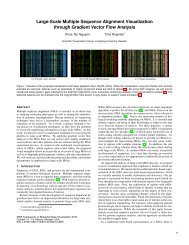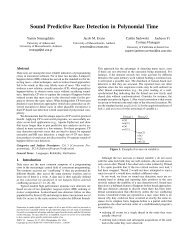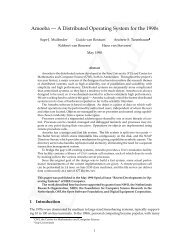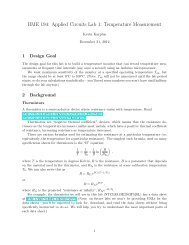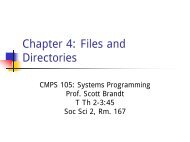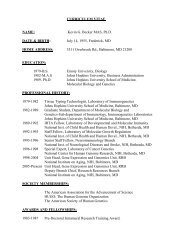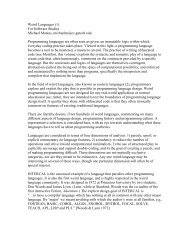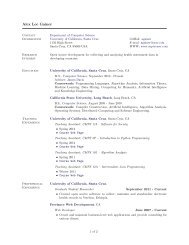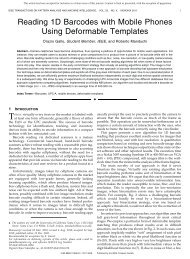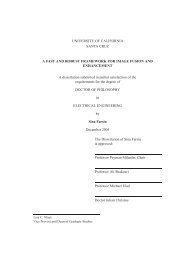Learning binary relations using weighted majority voting
Learning binary relations using weighted majority voting
Learning binary relations using weighted majority voting
You also want an ePaper? Increase the reach of your titles
YUMPU automatically turns print PDFs into web optimized ePapers that Google loves.
254 GOLDMAN AND WARMUTH<br />
in which the patient is given a fairly low dose of the allergen, or an intradermal (under<br />
the skin) test in which the patient is given a larger dose of the allergen. What options<br />
does the allergist have in testing a patient for a given allergen? He/she could just perform<br />
the intradermal test (option 0). Another option (option 1) is to perform an epicutaneous<br />
test, and if it is not conclusive, then perform an intradermal test. Which option is best?<br />
If the patient has no allergy or a mild allergy to the given allergen, then option 0 is best,<br />
since the patient need not return for the second test. However, if the patient is highly<br />
allergic to the given allergen, then option 1 is best, since the patient does not experience<br />
a bad reaction. The allergist's goal here is to minimize the number of prediction mistakes<br />
in choosing the option to test each patient for each allergen. Although Goldman et al.<br />
explore several possible methods for the selection of the presentation order, here we only<br />
consider the standard worst-case model in which an adversary determines the order in<br />
which the patient/allergen pairs are presented.<br />
This example makes an assumption that is a clear oversimplification. Namely, they<br />
assume that there are a common set of "allergy types" that occur often and that most<br />
people fit into one of these allergy types. Thus the allergy types become the clusters<br />
of the matrix. However, while it is true that often people have very similar allergies,<br />
there are not really pure allergy types. In other words, it is unreasonable to assume that<br />
all rows in the same cluster are identical but rather they are just close to each other.<br />
Without this flexibility one may be required to have most patient's allergies correspond<br />
to a distinct allergy type. Henceforth, we refer to the original formulation of the problem<br />
of learning <strong>binary</strong> <strong>relations</strong> in which all clusters are "pure" as learning pure <strong>relations</strong>.<br />
We propose the following generalization of the problem of learning <strong>binary</strong> <strong>relations</strong><br />
that we refer to as learning non-pure <strong>relations</strong>. For any column c of bits, let N0(c) be<br />
the number of zeros in c. Likewise, let .A/'I (c) be the number of ones in c. Suppose that<br />
the rows of the matrix are partitioned into a set of k clusters p = {S~,..., Sk}. Let<br />
S] denote the jth column of the cluster (or submatrix) S< For each cluster we define a<br />
distance measure<br />
m<br />
d(S{) = Z min{Afo(S]),Hl(S])}<br />
j=l<br />
In other words, think of defining a center point for partition S i by letting the value of<br />
column j in this center be the <strong>majority</strong> vote of the entries in S}. Then d(S i) is just the<br />
sum over all rows s in S ~ of the Hamming distance between s and this center point.<br />
We define the noise of partition p, c~p, as<br />
m<br />
ap= Z d(Si)= Z Zmin{N'°(S})'Afl(SJ )}'<br />
S i Ep S i Ep j=l<br />
and the size of partition p, kp, as the number of clusters in partition p. For each cluster<br />
77%<br />
i and column j, we define ~i,j : min{N'0(Sj),N't(S})}, and 6i = ~j=l 5




